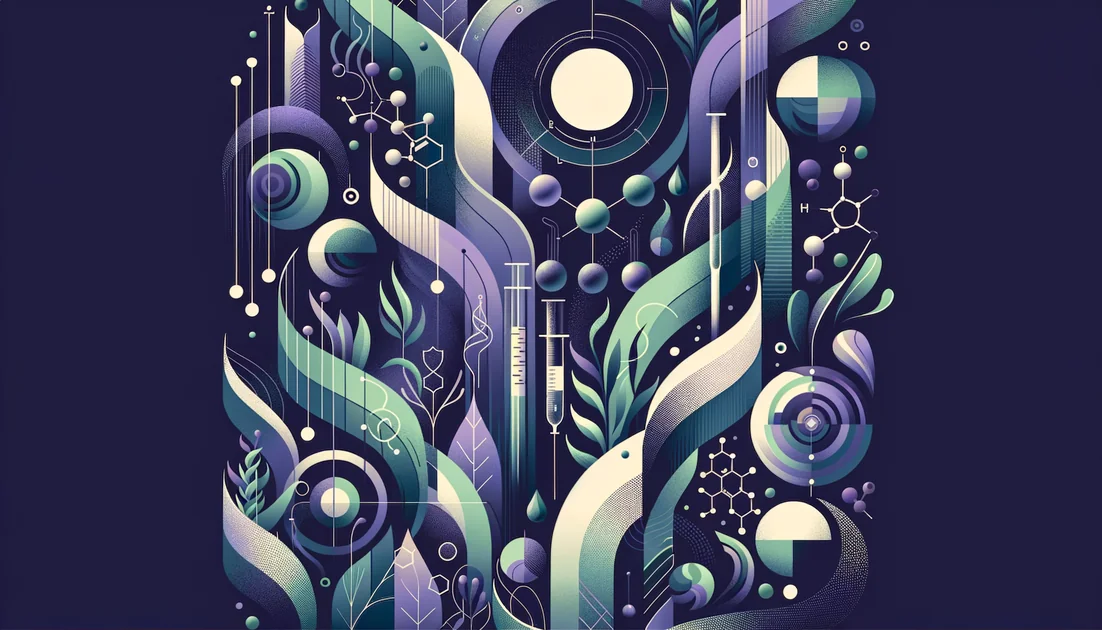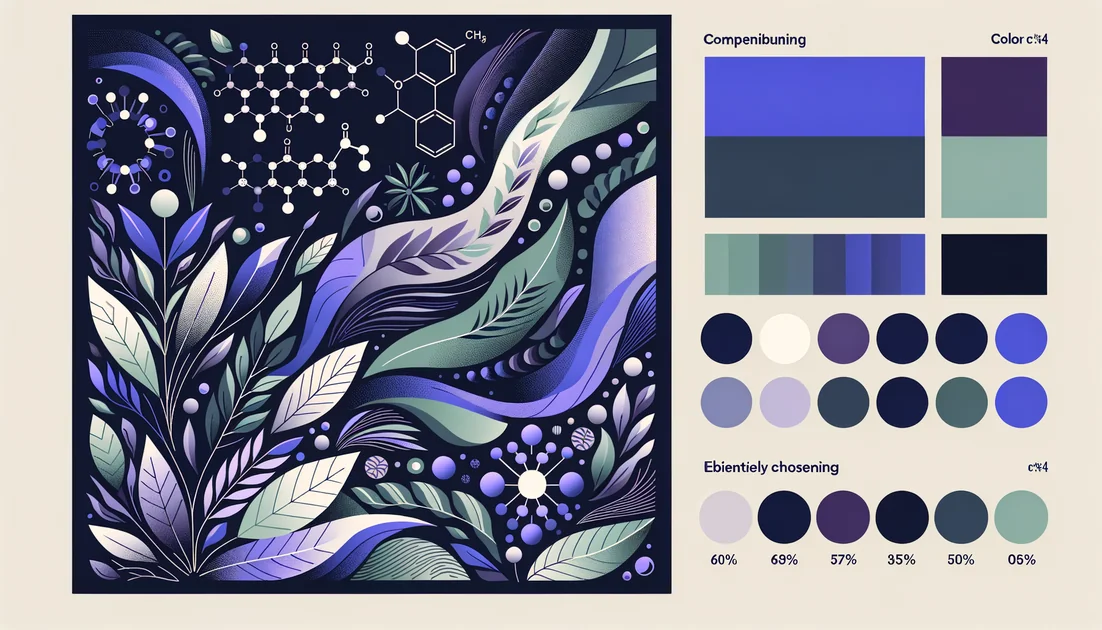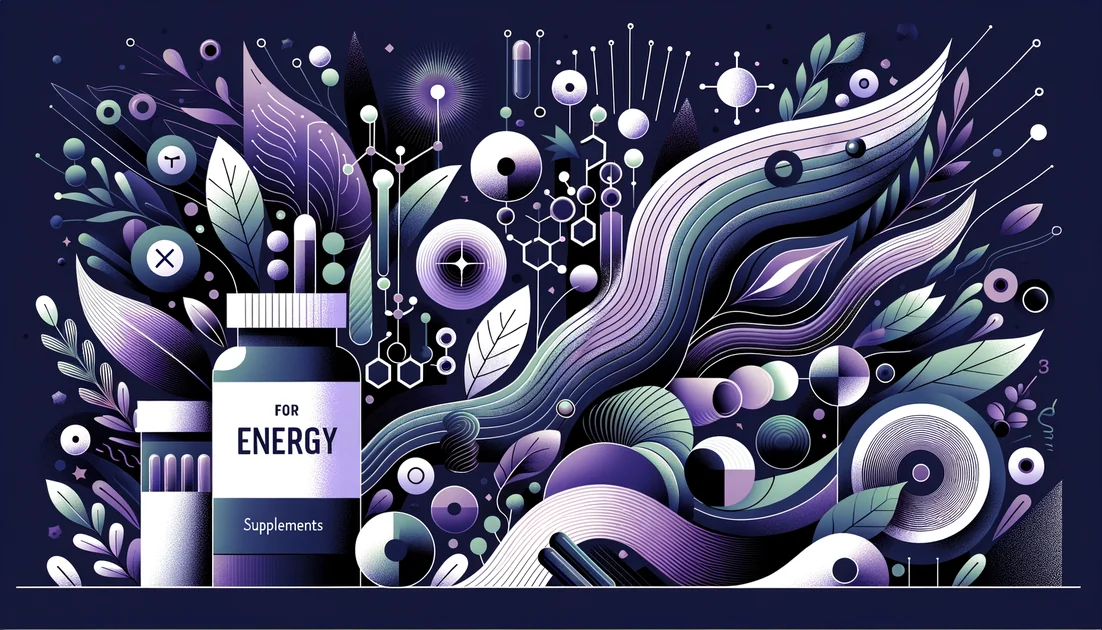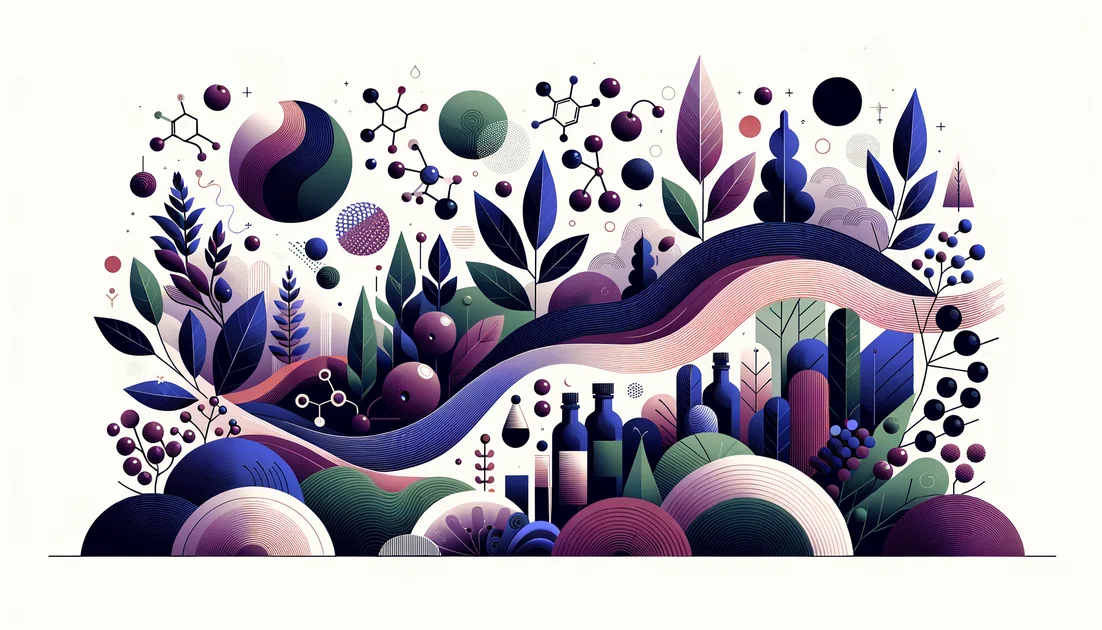
From Teacup to Mitochondria: How Apigenin Quietly Links Bedtime Calm to Cellular Energy
You wrap your hands around a warm cup of chamomile. Steam rises, the day settles—and somewhere between your eyelids and your cells, a small plant molecule begins two very different conversations: one with the brain's calming brakes, another with the cell's energy meters.
- Evidence
- Promising
- Immediate Effect
- Within hours (mild calming, especially from tea/extracts) → 2–8 weeks
- Wears Off
- Gradually over weeks; relapse prevention not established
The botanical whisper most people miss
Chamomile's reputation stretches from ancient Egypt to your kitchen shelf, but its steady hand often belongs to a single flavone: apigenin—a yellow plant compound abundant in chamomile flowers, parsley, and celery. Even its name nods to its roots: "apigenin" derives from Apium, the celery/parsley family that helped introduce it to our diets. Modern analyses confirm these plants as core sources. [1]
A calm hand on the brain's brakes
In the mid-1990s, researchers separated chamomile's chemistry like a watchmaker laying out gears. One gear clicked straight into the brain's "ease-up" switch: the same receptor family benzodiazepines use to slow over-firing neurons. That gear was apigenin. It bound the benzodiazepine site on GABA-A receptors and produced anxiety-reducing behavior in animals—without the heavy muscle-relaxing drag of classic sedatives at usual doses. Think of it as a gentle tap on the brake rather than a full stop. [2] Apigenin's GABA story didn't end there. Botanists later "followed the signal" in feverfew, isolating apigenin again by tracking fractions that grabbed those same calming receptors. [3] In mice, apigenin even deepened pentobarbital-induced sleep and nudged chloride channels—the ions that let GABA's quieting message flow—suggesting a plausible route for the familiar bedtime softness of chamomile. [4]
What happens in real people?
A team at the University of Pennsylvania put chamomile extract (standardized, pharmaceutical-grade) to a modern test: an 8-week randomized, double-blind, placebo-controlled trial in mild-to-moderate generalized anxiety disorder. The chamomile group improved more than placebo on the standard Hamilton Anxiety Rating Scale—modest, but meaningful for an herb used for centuries. [5] A longer study followed: 12 weeks of open-label chamomile for GAD, then 26 weeks randomized to continue or switch to placebo. Symptoms eased during treatment, and though relapse prevention wasn't statistically superior overall, the extract remained safe and symptom-reducing while taken. [6] Sleep is trickier. In a pilot trial of chronic primary insomnia, chamomile showed mixed, modest signals—some daytime function improved, but standard sleep metrics didn't budge consistently. [7] The U.S. National Center for Complementary and Integrative Health sums up the state of things plainly: "There's very little information on chamomile's effect on insomnia." [8] Yet a 2019 meta-analysis hints at a pattern many tea drinkers recognize: sleep quality (how restful nights feel) may improve, even if hard outcomes like total sleep time do not. Early benefits in GAD symptoms appeared by weeks two to four. [9]
The second storyline: refueling the cell's batteries
Here's the twist: apigenin also shows up in a discourse far from sleep and stress—NAD+ metabolism. NAD+ is the cell's universal coin for energy reactions. With age and chronic inflammation, one enzyme, CD38, behaves like a slow leak, chipping away at NAD+ reserves. In landmark experiments, apigenin inhibited CD38, raising intracellular NAD+ and shifting protein chemistry toward resilience in cells; in obese mice, apigenin improved glucose and lipid handling while boosting hepatic NAD+. [10] Zoom out and you see why this matters: senescent (worn-out) cells secrete inflammatory signals that induce CD38 in nearby cells, linking inflammaging to NAD+ decline. Break that cycle, and you potentially protect mitochondrial defenses. In diabetic rats, apigenin's CD38 inhibition restored the NAD+/NADH ratio, revived Sirt3 (a mitochondrial tune-up enzyme), and reduced kidney stress. [11][12] Is this real-world ready? Not yet. It's a compelling mechanistic trail—from enzyme to mitochondria to metabolism—but still needs human trials with isolated apigenin targeting CD38. [13]
A scientist's "aha" moment
When Ohio State scientists tested apigenin against one of cancer's favorite tricks—warping gene "splicing" to dodge cell death—they saw the molecule act like an editor returning a manuscript to its proper ending. "In its relationship with a set of specific proteins, apigenin re-establishes the normal profile in cancer cells," said associate professor Andrea Doseff, calling it a promising prevention strategy. [14] It's a story about breadth: unlike drugs that hit a single target, this nutrient brushes many proteins, sometimes nudging complex systems back toward healthy defaults.
The practical bridge between cup and capsule
Two realities shape apigenin use:
Food gives you milligrams; blood sees nanomoles. After a parsley-rich meal, peak blood apigenin averages ~0.13 micromoles/L, appearing many hours later and vanishing by a day—enough to prove absorption, but probably too low for many lab-observed effects. [15]
Standardized extracts concentrate the signal. In the GAD trials, chamomile extracts delivered 220–500 mg per capsule (titrated to 1–1.5 g/day, standardized to apigenin glycosides), taken for 8–12 weeks—an approach more consistent than tea. [5][6] A pharmacology analysis suggests that while "heroic" amounts of food aren't practical, semi-purified apigenin supplements can plausibly reach therapeutic blood levels, depending on formulation. [16] If you experiment, many people take chamomile extract in the evening for wind-down or divide doses for daytime calm. Expect any meaningful anxiety shift over 2–8 weeks, not overnight; the bedtime ease you feel on day one is the gentle GABA nudge, not a cure. [4][5][9]
Sensible cautions, real interactions
Plant molecules are not inert. Apigenin can interfere with drug processing enzymes (especially glucuronidation): in animals it boosted the oral exposure of the osteoporosis drug raloxifene, a sign that co-administration could raise levels of medications with narrow safety windows. [17] Test-tube work also shows apigenin can inhibit aromatase, the enzyme that makes estrogens from androgens—interesting, but not validated as a clinical effect. [18] And if your chamomile comes from the daisy family, remember classic ragweed-related allergies. NCCIH also notes scattered reports of interactions (e.g., warfarin, cyclosporine) with chamomile products. [8]
Why tradition noticed—and what's next
Traditions that leaned on chamomile weren't wrong; they were observing an herb that quietly presses the brain's calm button and, as we're now learning, talks to the cell's energy bookkeeping. The sleep/anxiety evidence in humans is modest but real, especially for perceived sleep quality and GAD symptoms. [5][6][7][9] The NAD+/CD38 story is still preclinical but intriguing, a rare case where a kitchen molecule brushes a hallmark of aging. [10][11][12][13]
"There's very little information on chamomile's effect on insomnia." — National Center for Complementary and Integrative Health, 2024. [8]
That honesty is the point. The next step is well-designed human trials of isolated apigenin—with smart delivery systems—to test whether the mitochondrial promise shows up in muscles, brains, and sleep. Until then, chamomile remains what it has always been: a gentle ally for the wired-and-tired mind, and a reminder that sometimes the smallest molecules are carrying two stories at once.
Key takeaways
- •Apigenin, a flavone abundant in chamomile, parsley, and celery, engages the benzodiazepine site on GABA-A receptors, promoting calm without strong motor sedation at typical doses.
- •Standardized chamomile extract rich in apigenin glycosides reduced generalized anxiety symptoms versus placebo in humans, with benefits emerging over weeks.
- •Apigenin inhibits CD38 and raises NAD+ in obese mice, linking this calming molecule to mitochondrial/metabolic signaling; human energy or longevity effects are unproven.
- •Practical dosing in trials used standardized chamomile extract titrated from about 220–500 mg capsules up to 1,000–1,500 mg/day for 8–12 weeks.
- •Timing: take in the evening for wind-down or divide across the day for steady calm; felt effects may appear within hours, but allow 2–8 weeks for score changes.
- •Cautions: apigenin can inhibit drug-clearing enzymes and has reported interactions with warfarin and calcineurin inhibitors; its aromatase inhibition suggests added caution in endocrine-sensitive contexts.
You might also like
Explore more of our evidence-led investigations, comparisons, and guides across every article style.

Puritan's Pride
Puritan's Pride: Industry-grade manufacturing meets discount pricing—so why is transparency still the weak link?

Tongkat Ali (Eurycoma longifolia) vs Fadogia agrestis
Pick Tongkat Ali if you want an option with human trials, defined dosing, and standardized extracts. Skip Fadogia agrestis for now—there are no human trials and animal toxicity signals raise caution. [1][2][3][5][12][13]


Tart Cherry (Montmorency)
You pour a glass of crimson juice at dusk. It looks like dessert—yet within hours it may nudge blood pressure down, and within days, lengthen your sleep. For a fruit bred for pies in French orchards four centuries ago, the Montmorency tart cherry has taken an unlikely second life as a recovery ritual and a quiet pact with aching joints.

Calm Focus Unlocked: Kill The Jitters
Real but modest, short-term benefits with a "gas pedal + steering" effect; best for focused tasks, not all-day stimulation.

Tocotrienols
The stealthier cousins of vitamin E—built with springy tails that move differently in cell membranes and behave differently in your body.
